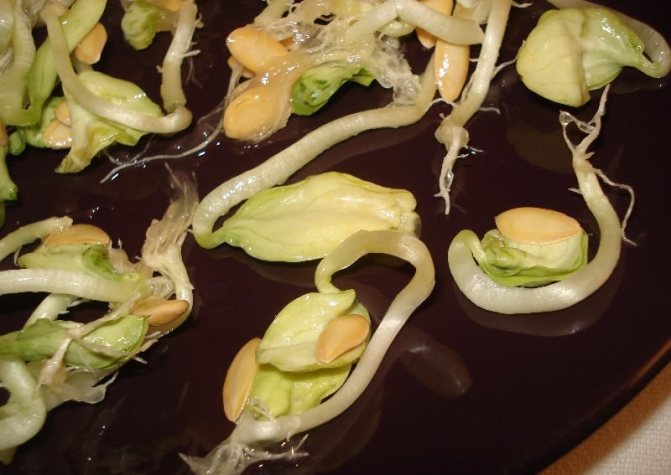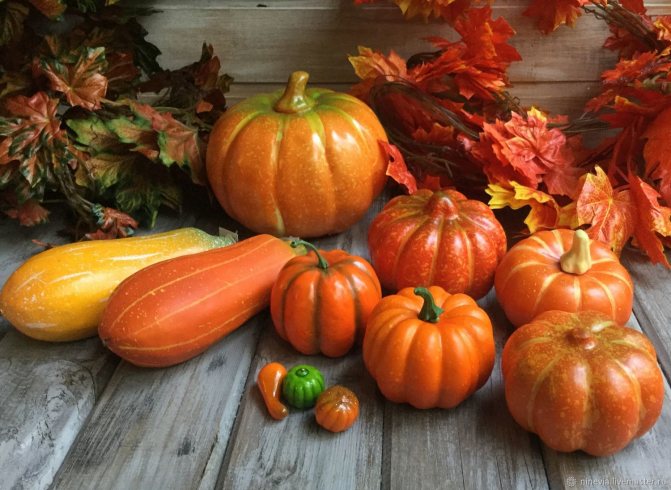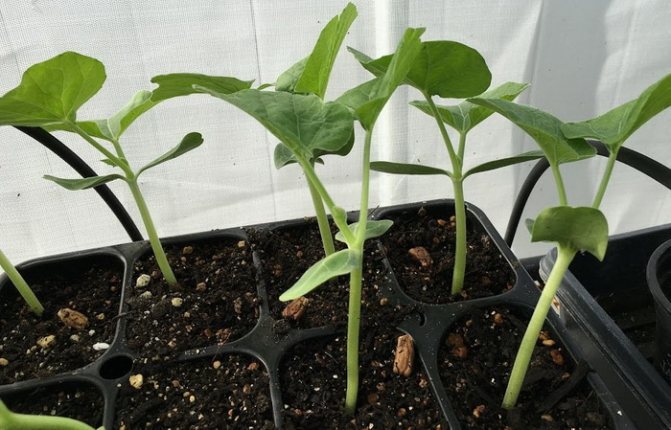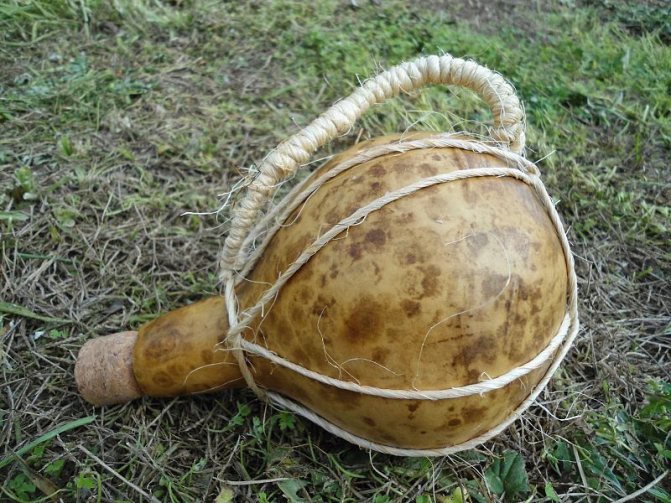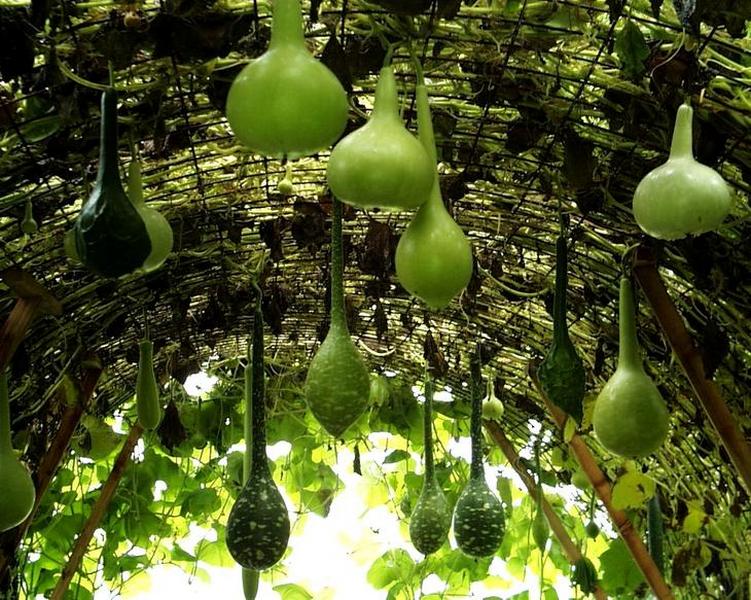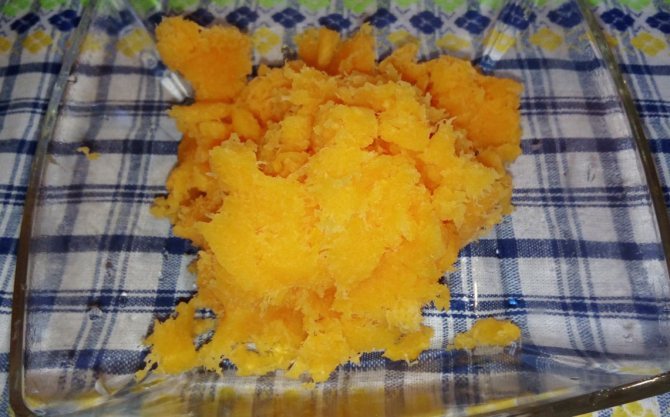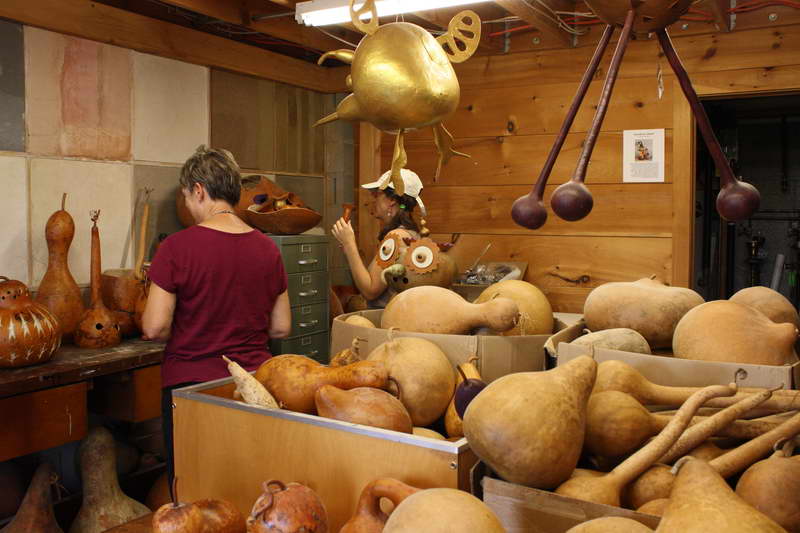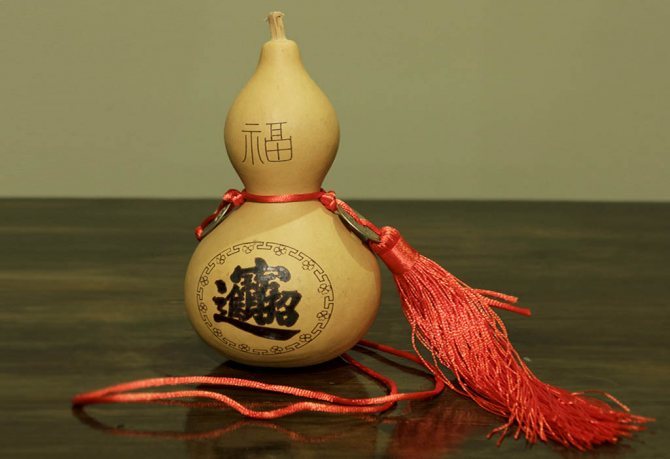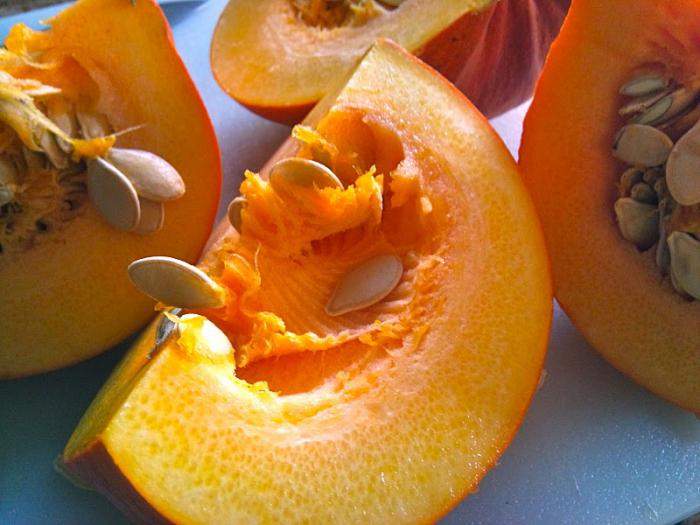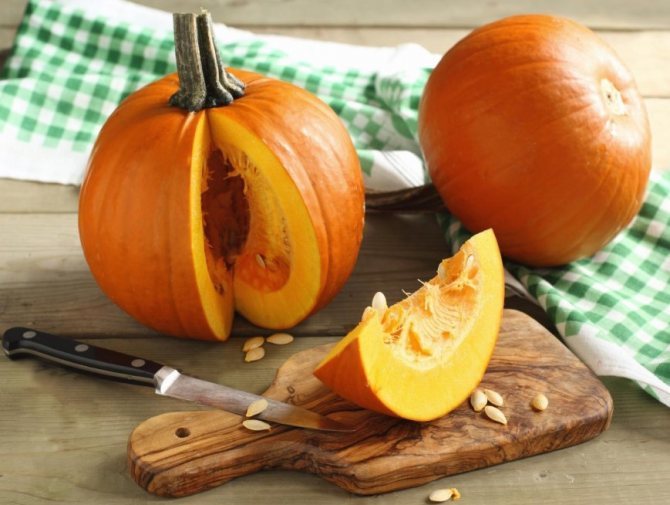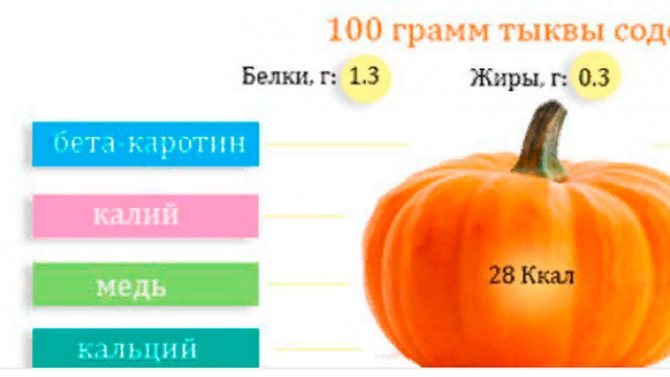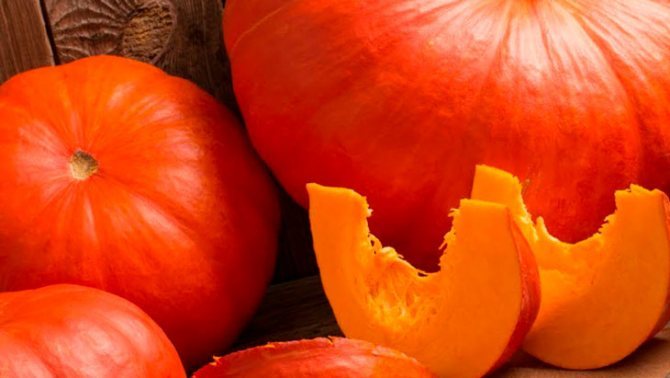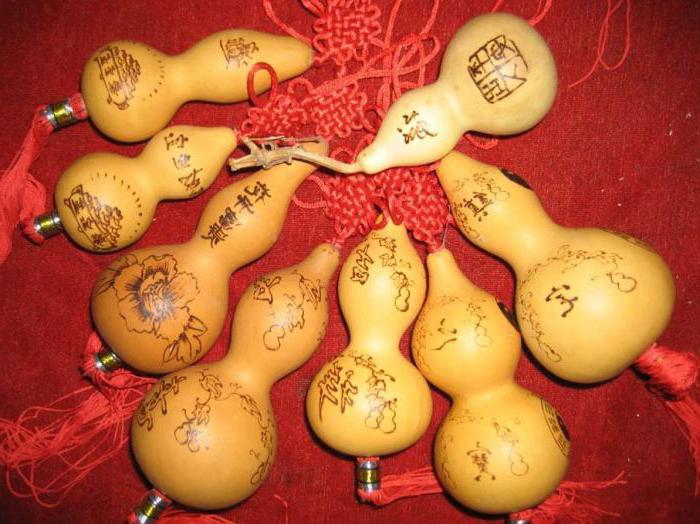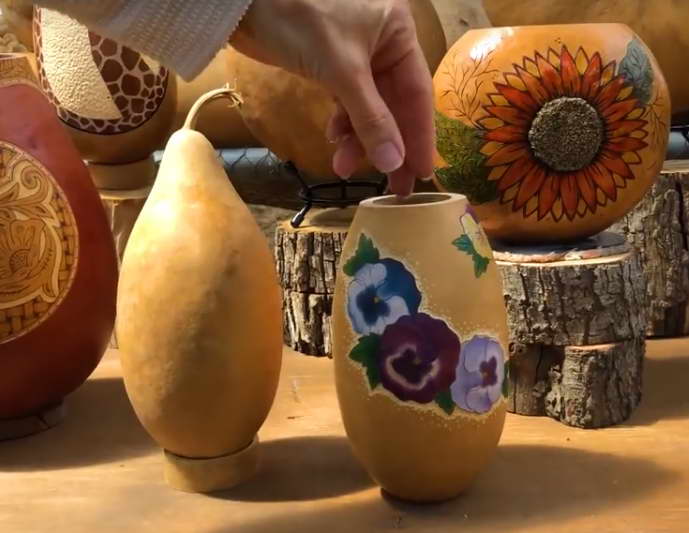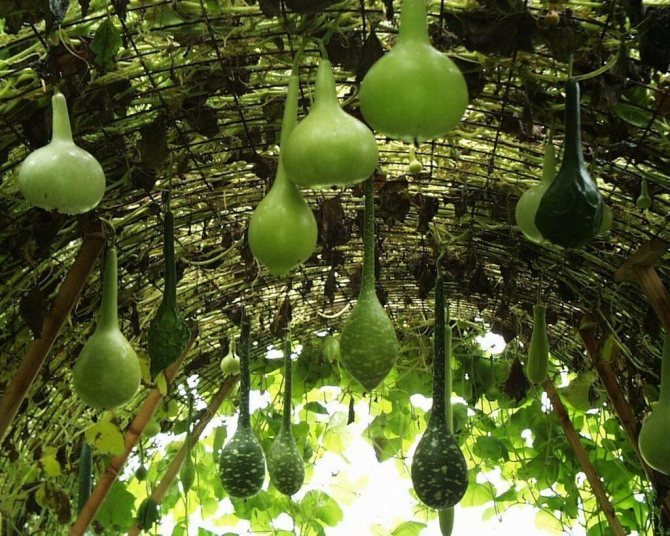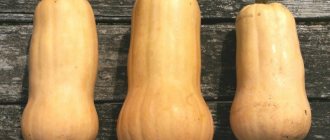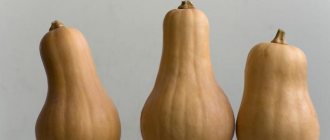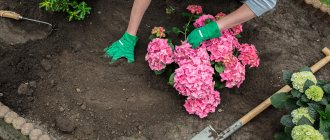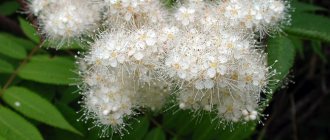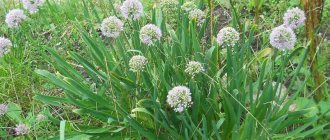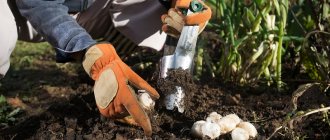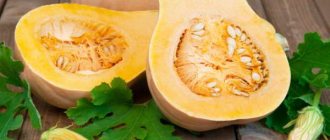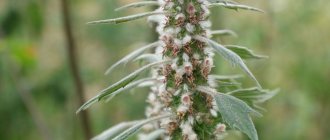Climbing plants are often used to decorate buildings and other objects in personal plots. Various types of lianas, ivy, wild roses and grapes have long taken their place in the designs of private houses and summer cottages. A curly ornamental pumpkin in the shape of a pear takes a special place among such plants. She is able to decorate facades and hedges for a very long time - from June to November. In addition, the curly pumpkin does not lose its decorative effect in the fall, since beautiful fruits of an unusual shape replace the withering leaves.
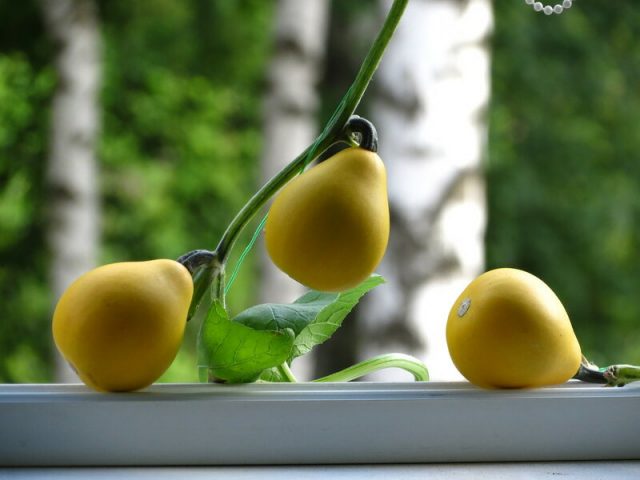
Appearance and popular varieties of decorative pumpkin
Breeders offer seeds of bush and climbing subspecies of ornamental pumpkin. Shrub hybrids are planted in flower beds, and climbing varieties are used for spot gardening.
- pear-shaped. The name speaks for itself - the shape of the fruit is very reminiscent of a pear. The color palette of this type is not uniform - there are both monochromatic and two-color ones. Moreover, the latter have a clearly marked border between different colors;
- tangerine. Distinctive features of this group are a very rich orange color, rounded shape, rather smooth peel, small size of pumpkins;
- star-shaped. The fruits of this variety are similar to starfish and small squash. They have a slightly flattened oblong shape with unimaginable colors - green, white, yellow, or a combination of several colors at once. The maximum fruit size is 15 cm;
- Warty. Pumpkins of this variety have a pear-like or round shape. They are covered with many bumps that resemble warts. And the variety of colors and their combinations can only be envied: yellow, white, fiery orange, green;
- turban pumpkins (popular name - fungus or Turkish turban). The fruit of this variety often has a smooth skin of bright orange or green marbled color. The color of the main part of the pumpkin and the "turban" is different in most cases;
- vicolis pumpkin is a typical decorative pumpkin. Its characteristic features are very beautiful lobed leaves and variegated green fruits with a white stripe or speck;
- lagenaria (bottle, dish pumpkin, gourd) refers to a decorative type for its unusual shape and green marble color. This variety is used for decoration, cutting out dishes, original vases, boxes, etc.
- "Orange". The pumpkins are small, resemble an orange in appearance and color. Very effective.
- Baby Boo. The vegetables are white, slightly ribbed, their diameter is about 10 cm. The bark is smooth.
Most often a mixture of varieties is offered for sale ("Artist", "Rattle", "Souvenir"). The fruits are very varied. They are distinguished by their bright color, shape (from star to pear-shaped). Some mixtures offer plants with similar fruit shapes.
Popular types of decorative pumpkins:
- Sweet Dumpling. Small, flat-round, have dark green stripes with white dots between yellow ribs.
- "Crown". Surprise with unusual star-shaped berries. Their size is up to 15 cm. The colors are very different - from yellow to bright green.
- "Turkish turban". In appearance it really looks like a turban. Orange color.Differs in sweet juicy pulp, suitable for human consumption.
- "Kleine Bicolor". Pear-shaped fruits attract attention not only by their shape, but also by their contrasting color. Below it is dark green, above it is bright yellow.
We have listed the names of the most popular varieties, but this is far from the entire list.
There are many varieties of ornamental pear-shaped gourds. Basically, they differ in the shape and color of the fruit. Planting and grooming requirements are basically the same. See descriptions and photos of the most popular varieties.
Kleine bicolor. The fruits are shaped like a large glossy pear. As the name suggests, the fruits combine two colors - bright yellow and green.
Cou-Tors Hative. The variety belongs to the group of so-called torticollis. Bizarre fruits with a bright orange pimpled shell resemble a swan in shape.
Texas pumpkin. The plant forms large pear-shaped fruits, the color of which resembles a watermelon: light green stripes appear on a dark green background.
Golden pear. This pumpkin has huge, bright orange, teardrop-shaped fruits with a tuberous shell. Unlike most ornamental varieties, this pumpkin is quite edible. It has a sweet taste with hints of roasted chestnuts.
Peanut Butter Pumpkin. Forms large, golden-orange, elongated pear-shaped fruits. Like the previous variety, it can be used to prepare various dishes.
Speckled swan gourd. A rare and very unusual variety. Justifying the name, the fruit looks like a swan with an arched neck. The color of the shell is also unusual: white spots on a green background.
As you can see, decorative pumpkins are a great opportunity to decorate your backyard in an unusual and bright way. In addition, dried fruits are an excellent material for making hand-made decor items: original vases, candlesticks and lamps.
- Trombone. It has a long and curled shape. Bright orange pulp. Used for decoration and food.
- Crown. They have fruits of different colors and yellow flowers. Fruits in the form of crowns and umbrellas.
Crown shaped pumpkin suitable for making crafts with children
- Little Red Riding Hood. It is also called turban, because of its shape. The fruits are red-white, resembling a mushroom.
- Lagenaria. Such a pumpkin can be in the shape of a pear, a snake, or a mace. Flowers bloom at night.
- Orange. Has the shape of an orange. It can be orange, yellow or sandy in color.
- Warty. Various colors and shapes. There are nodules and bumps on its surface.
- Jack bee little. Bright orange pumpkin.
- Baby boo. White and smooth gourd that can be eaten.
- Sweet Dumpling. Has sweet pulp and pleasant aroma. White and orange and green stripes.
- Avoid planting or propping up the pumpkin close to walls and fences. Then there will be no access to the rear of the plants, for control, care and spraying from diseases and pests.
- Be sure to sprinkle mulch on top of the ground. It retains moisture and heat well in the root system.
- Fertilize in the fall, during planting and throughout the growth of the pumpkin. It is advisable to do top dressing regularly. If they are not carried out systematically, the pumpkin will not give yields.
- Do not plant the pumpkin in a small container. Use large pots to grow seedlings to give the root system room.
How ripe pumpkins are used
Working with different types of decorative pumpkins, they create practical and beautiful household items suitable for decoration, storage of water and food. To prevent small pumpkins from rotting, the crop must be harvested before the first fall freeze. Fruits with a coarse thick crust should be left for crafts.
A drawing is applied to small bright pumpkins with paint, and then the drawing is fixed with varnish.
Birdhouses, flower pots, bottles, containers for storing cereals, boxes and buckets are made from the fruits of lagenaria. Bottle pumpkin must undergo a special treatment before being used in the home.
How pumpkins are dried
The harvested crop is sorted out, leaving only fully ripe fruits. They should have a dry stalk and a firm crust. To determine the degree of maturity, it is carried out with a fingernail. It is difficult to leave a deep scratch on a mature casing. The hard, dry crust of Lagenaria has a yellowish brown tint.
Selected specimens are washed with soap, wiped, allowed time to dry and wiped with alcohol. Clean pumpkins are removed to a warm, dry room until completely dry.
When the bottle gourd is dry, it is transferred to a place where the fruits will lie for six months. Lagenaria needs a well-ventilated place where it will not be exposed to direct sunlight.
Important! Part of the small pumpkins begins to rot during storage. They are removed to prevent fungi and bacteria from settling in healthy pumpkins.
The fruit is periodically checked for signs of mold. Its appearance requires additional treatment of the shell with an antiseptic. If the skin retains its density, then the mold is removed with a rag dipped in chlorine bleach.
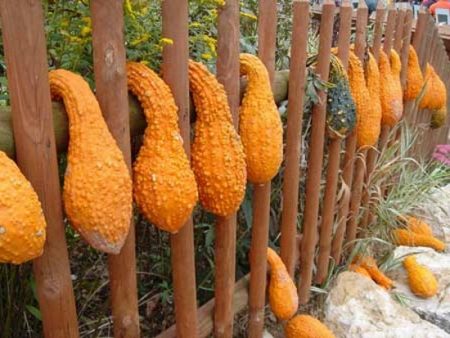

The outer color of the shell darkens when the pulp dries. The shriveled ornamental lagenaria gourd becomes very light. Seeds rumble inside her. If the pumpkin is thrown into water, it will float on the surface.
How to protect a plant from harmful insects and diseases?
Both insects and diseases are capable of killing a decorative pumpkin. Protecting this culture from them is the direct responsibility of the gardener. The most dangerous are:
- aphid;
- bacteriosis;
- slugs;
- powdery mildew;
- white rot;
- root rot.
Powdery mildew appears as white and gray spots on the foliage or stem. Plants that grow in the shade or in a climatic zone with a sharp change in temperature are especially striking. If you do not start timely treatment with special chemicals, then the disease will affect all organs of the plant, as a result, it dries up and dies.
Spray on time to avoid powdery mildew on the leaves.
Read next: Chrysanthemum diseases and pests photos
Root rot attacks the plant at the root. To avoid this, you need to treat the seeds before planting with disinfectants. If, nevertheless, the disease manifests itself, then you need to pour clean and new soil, peat and humus to the root of the plant. When affected by white rot, the plants are covered with neoplasms in the form of cotton wool and begin to get wet.
Most exotic pumpkin varieties are not demanding and do not need special care. It is quite enough to properly prepare the seeds, and then water the plants in time and fluff the soil around the root. Also, fertilizing plants with organic fertilizers will not be superfluous. Usually, the first feeding is carried out two weeks after germination, and the next one - during the formation of the ovary. To stimulate the growth of side shoots and form a more lush "hedge", you can pinch the one-meter shoots.
A strong support should also be provided for a decorative pumpkin, since most of its species are climbing plants, and during the period of active growth, the stems, leaves and fruits are quite heavy. Many gardeners grow this crop near gazebos, verandas, fences and other structures, thus providing natural support and without the hassle of creating additional supports.
To understand how to care for, grow and harvest pumpkins, we recommend watching the following video clip. The most useful and relevant information is collected here.
Ornamental pumpkin is a fast-growing liana that forms shoots up to 6 meters long. Plants are grown primarily as annuals. This pumpkin variety differs from the usual in the following characteristics:
- thinner stems;
- more branched shoots;
- smaller leaves;
- fruits of most varieties are not eaten, although they are edible;
- smaller fruit size;
- a wide variety of fruit shapes and colors.
Regarding the last point, it is worth noting that gardeners do have a lot to choose from. There are varieties with round, pear-shaped, bottle-shaped, oval and star-shaped fruits. The fruits of the decorative pumpkin, unlike the usual one, can be of a variety of colors. Each plant forms from 20 to 30 fruits with light orange pulp and seeds. You may not know that the biological classification of pumpkin fruits belongs to berries.
The flowering plant is also of ornamental value. At the beginning of summer, medium to large yellow, orange or white flowers appear on the climbing plants.
Plant care is quite simple. The following main recommendations can be distinguished.
A week after planting, you need to mulch the soil to protect the plant from weeds. Peat, pine needles, or even dry soil can be used as mulch.
It is important to regularly weed and loosen the soil next to the plants. Loosening within two weeks after planting is carried out to a depth of 12 cm, and after a month - up to 5 cm.
Plants need to be watered regularly during flowering and ovary formation. Only warm water (about 20 degrees) should be used for irrigation.
From the moment the foliage appears, the seedlings need to be fed with dry nitrophosphate, and from the moment the lashes are formed - with a solution of this substance.
Competent care also involves preparing a strong support for the climbing shoots of ornamental pumpkin.
Raw or Processed: Which Pumpkin Is Most Healthy?


Undoubtedly, this product is a storehouse of the most useful substances in the untreated version. This is how many people eat it, but before using it, you need to make sure that the vegetable is ripe. Otherwise, the pumpkin will not benefit, but harm the body.
Raw fruit is tough enough that babies and older people are unlikely to be able to eat it. In this case, it is recommended to heat the fruit. Despite the fact that the processed vegetable loses a certain amount of vitamins, in this form it is able to fight harmful substances in the body.
Growing pumpkin from seeds in the open field
Ornamental pear pumpkin can be planted with seedlings or seeds directly into the open ground. The choice of method depends on the climatic conditions of the area. Landing time in open ground also depends on the geographic latitude. In the middle lane, this is the period from late April to mid-May.
This pumpkin cultivation option is suitable for the southern regions, where the average daily July temperature does not drop below 18 degrees. Sowing seeds in open ground should be if there is no longer a threat of frost. Experts recommend to warm up the seeds a day before sowing and soak them in an ash solution.
After planting, the seeds or seedlings must be watered.
In order for decorative pumpkins to please others with their beauty, not so much effort is needed. First of all, they should be planted in sunny areas or light shade on fertile soil. It is advisable to germinate the seeds just before sowing. This is best done in a warm, dark place (closet, closet, etc.). These ornamental crops can be grown both from seedlings and by sowing seeds directly into open ground.
For seedlings, seeds are sown in late April or early May. The seeds that have hatched are planted in deep peat pots and placed in a greenhouse or on a windowsill. Plants can be transferred to open ground in early June, when the probability of frost decreases. Sowing seeds directly into open ground is carried out at the end of May. It is also advisable to germinate them first. Slightly hatched seeds should be planted in shallow holes at a distance of about 30 cm.
For the pumpkin to grow normally, the soil must be breathable, full of nutrients and trace elements. Start working with soil in the fall.The main rules for gardeners:
- Remove plant debris from the land.
- Dig up all the soil.
- Add organic matter and mineral fertilizers.
Fertilize the soil during autumn digging.
Table 1. Application of organic fertilizers
| Item No. | Fertilizer name | Dosage |
| 1. | Manure | 50 kg / 10 m 2 |
| 2. | Peat manure compost | 40 kg / 10 m 2 |
| 3. | Humus | 40 kg / 10 m 2 |
Nitrogen and potassium are added when sowing seeds or when planting seedlings. Do not use too much nitrogen fertilizer, as the leaves will begin to grow strongly, and the fruits and flowers will be poorly formed. It is advisable to add phosphorus when digging a vegetable garden in the autumn. There are certain rates of fertilization, depending on the type of soil.
| Item No. | Soil type | Fertilizer name | Application period | Dosage | Feature |
| 1. | Not very fertile soil. Sod-podzolic | Organic | In autumn | 75 kg / 10 m 2 | Introduced during digging |
| Potassium sulphate | 160 g | ||||
| Superphosphate | 200 g | ||||
| 2. | Poor soils | Manure | Before boarding | 5 l / well | Fertilizers are mixed with the soil at a depth of 20 cm |
| Superphosphate | 50 g / well | ||||
| Ash | 100 g |
Read next: Sarcoptic mange of pigs symptoms treatment folk remedies
If you plan to grow ornamental pumpkin, then the seeds should be prepared in the fall. They can be harvested from an existing crop, or purchased from specialized stores. When preparing on your own, let the seeds ripen well. The best place for storage is wet sand and a cool place, you can place them in the basement, on the bottom shelf in the refrigerator or on the balcony.
Before planting, disinfect the seeds with a special solution, you can treat them with a means to stimulate growth. Keep it in gauze in a warm place, moisten it regularly with water. Thanks to this, the seeds will germinate quickly.
You can sow seeds in mid-May, but be sure to make a shelter for them. Do not use cloth or film material for this. Take plastic bottles that are pre-cut. Plant one seed at a time, sprouting towards the top. Next, regularly water, loosen the soil and apply fertilizers. ...
Warm the seeds after planting with a plastic container.
When planting a decorative pumpkin in a garden or summer cottage, you should not plant it after potatoes, watermelons, melons and sunflowers. The best place for her is sunny. Do not plant or sow this melon crop too early, as it does not like cold and generally low temperatures. The best temperature for her is 30 degrees.
Gardeners and gardeners play an important role in feeding plants and fertilizers. If this is done correctly and in a timely manner, then the yield will be excellent. Water thoroughly and do not allow the soil to dry out. The roots are extensive and love moisture. Watering should be done in the evening or in the morning, every day. In the heat, it requires more liquid, but remember that watering is prohibited during the peak of the heat.
It is sown with seeds if climatic temperatures reach 20 degrees. If the climatic zone differs from such indicators, then it is better to plant pumpkin seedlings. ... For sowing seeds, holes are made seven centimeters deep and one meter apart. Two seeds are placed in each hole. If two emerge, then the seedlings should be thinned out. If you want to keep the fruit longer, it should be cut with a five centimeters footboard.
A very important point is the "sifting" of the seeds. It is necessary to remove the small thing and too light. By adhering to the following manipulations, you can achieve the fastest germination and obtain healthy plants.
- Soak the seeds in warm water for three hours.
- Dilute the solution, which should not contain more than thirty percent salt. Fill them with seeds. Those that have sunk to the bottom and should be taken away.
- Place them on a damp cloth, cheesecloth, or damp sawdust.
- Leave in a cool place (refrigerator, basement) for four hours to harden the seeds.
- After all the stages passed, the seeds are ready for sowing even in open ground.
Seeds must be carefully selected before planting.
From the correct planting of a decorative pumpkin, what kind of fruits will appear directly depends. How to plant a decorative pumpkin?
Growing seedlings
- The plant propagates by seeds, but it is better to plant seedlings immediately. In the fall, you can prepare the soil. It is fertilized with manure (5 kg / m2), mineral fertilizers (azofoska at the rate (40 g / m2). The soil is dug up to a depth of 30 cm.
- Seeds should be sown in cups, peat pots between April 25 and May 5. Diameter - 10-15 cm. They are filled with light soil mixture. Seed germination can be accelerated. To do this, they should be soaked for a day in any stimulant. How to prepare the solution is indicated on the package. Then the seeds are sown immediately. It is better to choose not freshly harvested seeds, but those that have been stored for 3-5 years.
Landing in the ground
It is better to sow seeds in the ground in the second decade of May, when the air temperature rises to 15-18 degrees. Sowing depth - 7-8 cm.
When planting seedlings, seedlings are planted in June. It should be loaded very carefully, the plant does not tolerate this process well. The depth of the holes is 15-20 cm, the distance between them is up to 80 cm. The soil must be sprinkled so that the neck of the root is below ground level. Therefore, the base will appear characteristic bark tubercles, which must be sprinkled with earth.
Description of decorative pear pumpkin
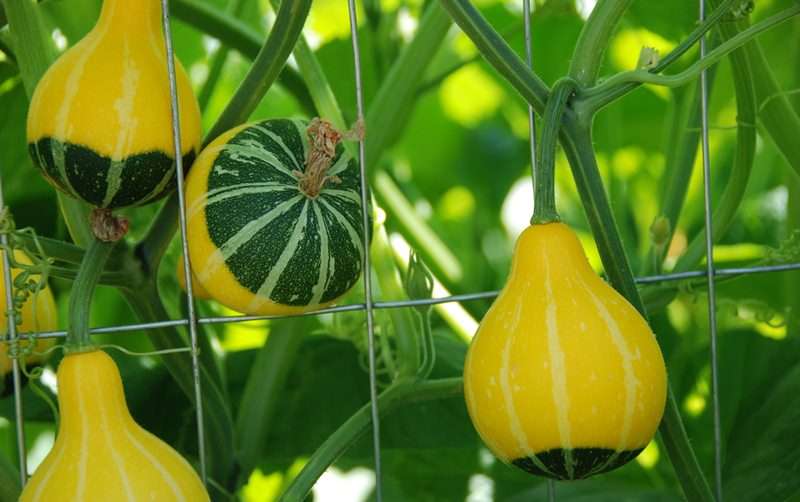

This is one of the most unusual and striking species. The fruits of the plant are pear-shaped. In size, they are usually several times larger than a pear-fruit. The variety of color options for this pumpkin is impressive. Fruits can be orange, red, cream, green, striped, spotted, and even white.
The plant forms long branched shoots with dark green leaves. Such a liana can be a spectacular decoration for a hedge, a wall of a garden building, an arch or a pergola.
Botanical characteristic
Bottle gourd is a vegetable with large fruits that have an elongated rounded shape, often pear-shaped, sometimes oval. Some specimens are up to 2 m long and 10 cm in diameter or more. The bark is dense, waterproof, has a green color, similar to the shade of a watermelon.
The scientific name for an ornamental vegetable, shaped like an hourglass, is lagenaria.
The stem of the plant is liana-shaped, faceted, the lianas are covered with fluff. Each vine reaches a length of 15 m or more. On each bush, 10-15 vegetables are formed with a mass of 0.5-1.5 kg. Adjusting the size of vegetables is obtained by pinching the lateral shoots and removing excess ovaries during the flowering stage.
The root system is well developed. The main root goes 0.7-0.8 m in depth, the lateral roots - 2.5-2.8 m. Lagenaria is able to form roots above the ground.
Growing a decorative pumpkin from seeds
You should not dive the pumpkin. She can't stand transplants. Seedlings are grown in peat pots or plastic cups. Then they are planted in the ground together with the ground in which the plant grew. Make sure the pots or glasses are deep, as the root system has a main vertical shaft that goes deep into the soil and grows strongly.
In pots, mix peat, humus and river sand, in proportions 1: 1: 0.5. Nitroammofoska and lime are also added here. This composition will allow you to quickly grow healthy and strong seedlings. When planting seedlings, leave a meter or more between the plants. The depth of the hole is 30 cm, the width is 40 cm. Mulch the soil so that the liquid retains after watering.
If you want to decorate your balcony or loggia, then a decorative pumpkin is best suited for this. Varieties with a hard bark, small size and little weaving are in demand in growing by this method. They ripen faster than others.
For balcony cultivation, select a variety with small fruits.
The soil will be in equal amounts of humus, soil and peat, as well as some sawdust and river sand. Two weeks after planting, the pumpkin is fed. In the form of dressings, urea, superphosphate, potassium sulfate or any complex fertilizers are used. It is necessary to regularly loosen the soil and water the plants. Place planks under the fruits so that they do not rot. It is very important to maintain the required air temperature on the balcony.
Read next: Green chives growing from seeds on the windowsill care
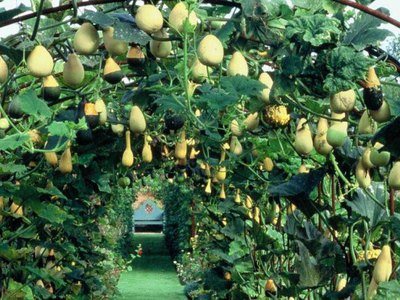

Growing a decorative pumpkin requires certain skills. To grow a plant, it is better to plant it in the sun, cover it from the wind. Constant care and observation are important.
Temperature
Let's take a closer look at how to care for this curiosity. A young plant should be protected from frequent spring frosts, they are not resistant to frost. Even a temperature of -1 ° C will be destructive. You can plant seedlings immediately. Remember that it is the conditions under which the pumpkin grows that directly affect the quality of the berry, the splendor of the greenery.
Acidic soil is not suitable, it can withstand saline soil. It is best to plant the vegetable in light soil, loose, calcareous. It is highly fertile. It is good if it is black soil with a part of sand and clay.
Watering, fertilizing
This representative of the flora should be watered frequently, fed (organic fertilizers). You can pamper the pumpkin with foliar feeding. You can use urea for this.
Landing place
You need to be especially careful when choosing a place. Better to plant away from the cold wind. It will take a lot of sun, protection from the wind. To support strong stems with large leaves, provide a solid support.
Like all members of the pumpkin family, this variety does not require complex care. Growing can be successful in almost all climatic zones of our country. Compliance with the basic rules of agricultural technology will allow even a novice gardener to grow a beautiful and healthy plant.
This growing method involves two stages.
Germination of seeds for seedlings in special containers. These can be paper cups, pots, or seed boxes. You need to sow seeds about three weeks before transplanting into open ground. It is better to use a mixture of soil and peat in a ratio of 2 to 1 as a growing substrate. In order to ensure maximum seed germination, in the first three days after sowing, you need to maintain the air temperature in the daytime at the level of 22-25 degrees, at night - not lower fifteen.
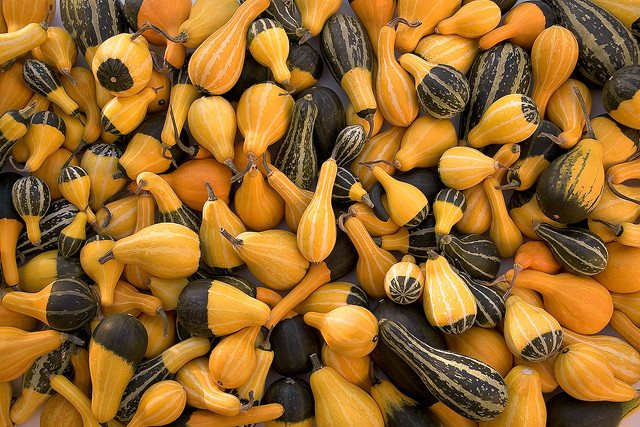

Planting seedlings in open ground. The optimum soil temperature for transplanting is 12 degrees. The temperature can be easily determined by immersing an ordinary thermometer in the soil for ten minutes. At a lower temperature, plants need to be planted under a film, preferably black. There is another option at low soil temperatures. The planting holes need to be filled with about three liters of hot water.
General care
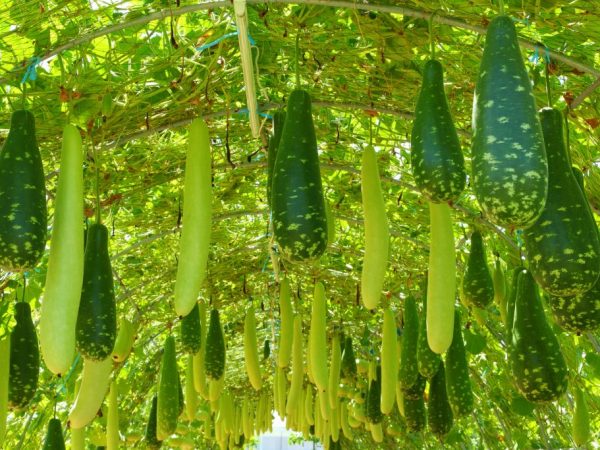

Water the plant once a week.
If the land plot is correctly selected, the bush will not need additional measures. Trimming of the lashes is carried out only to increase the yield, and only in the case of a strong growth of the lashes.
The decorative pumpkin is watered no more than once a week. The gardener needs to be guided by the state of the soil layer. As soon as it dries out, watering is carried out.
To better moisturize the root system, the soil around the bush is loosened before irrigation.
Such measures improve the carrying capacity of the soil. Rainwater is used for irrigation. It needs to be heated, and for this the vessel with the liquid is left in the sun during the day. Moisturizing is carried out in the evening so that the leaves do not turn yellow from moisture. The best watering for pumpkin is drip.
Fertilizing the soil
Organics are placed in the hole before planting, and then every 10 days they are used to recharge the soil.
Use manure or humus diluted in water. Poultry droppings are rarely used, and only in diluted form.
Mineral fertilizers are applied before planting if the quality of the soil is low. Feeding stops 2-3 weeks before harvesting.
Pollination of the bush
As soon as flowering begins, pollination is carried out. Pollen from three male plants is used. This is done only at night. The inflorescences are opened, thanks to which the process is faster and more efficient.
If you are late with the procedure, you will not be able to get a good harvest.
Soil and lighting requirements
The plant is tolerant to almost all types of soils, but humus-rich, moderately moist soils with sufficient drainage are the best options. The optimum level of soil acidity (pH) is 6.5. Before planting, compost should be added to the soil, the amount of which will depend on the natural characteristics of the soil.
The plant will feel much worse in the area where the following related crops grew before:
- zucchini;
- squash;
- cucumbers.
The most favorable precursors for pumpkin are:
- tomatoes;
- carrot;
- onion;
- cabbage;
- winter cereals such as wheat or corn.
Sometimes gardeners fear that the plant may become sick or die due to groundwater lying close to the surface. In fact, it has no effect on the growth and yield of the pumpkin.
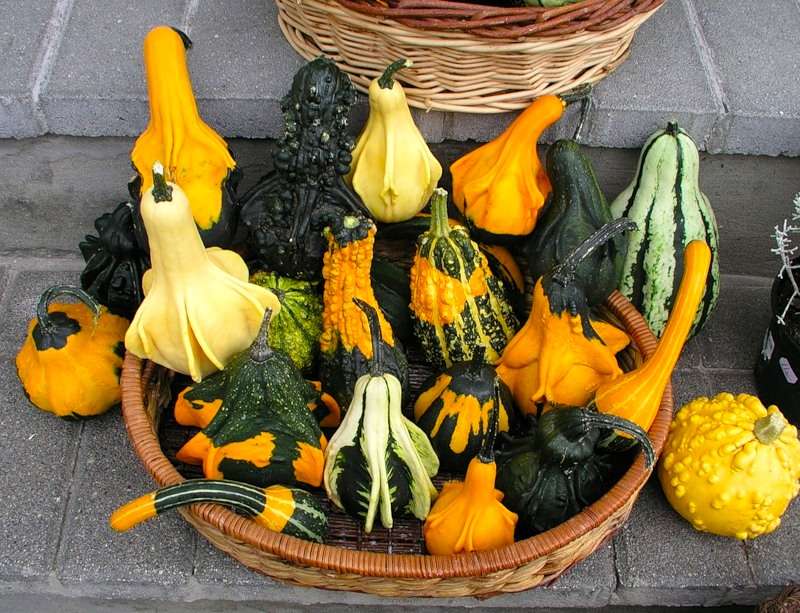

Pumpkin is a light-loving plant. It will grow best in an area that is illuminated by direct sunlight for at least 6 hours a day. In this case, you can count on the maximum yield and the best quality of the fruit.
At the same time, the plant can grow quite well in partial shade. Knowing this, some gardeners use this type of pumpkin to protect other plants from weeds. Planted in corn beds, a curly ornamental pumpkin takes up space while preventing weeds from growing and beautifying the garden.
Application of the vegetable
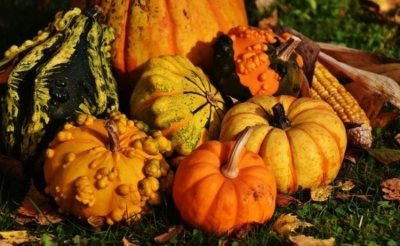

Many gardeners, on whose summer cottages a decorative pumpkin grows, very often do not know what, in fact, to do with it. Quite often, the grown fruits are used in the preparation of various dishes or salting. But still, the main purpose of this plant is to decorate a garden plot or any room.
All kinds of crafts can be made from dried decorative pumpkin.... Very popular:
- vases;
- boxes;
- lanterns.
Ornamental pumpkins are grown on their plots by a large number of gardeners... Before planting this interesting plant on your site, you must definitely familiarize yourself with all the rules of care and cultivation, so that the result is pleasing to the eye from early summer to late spring.



